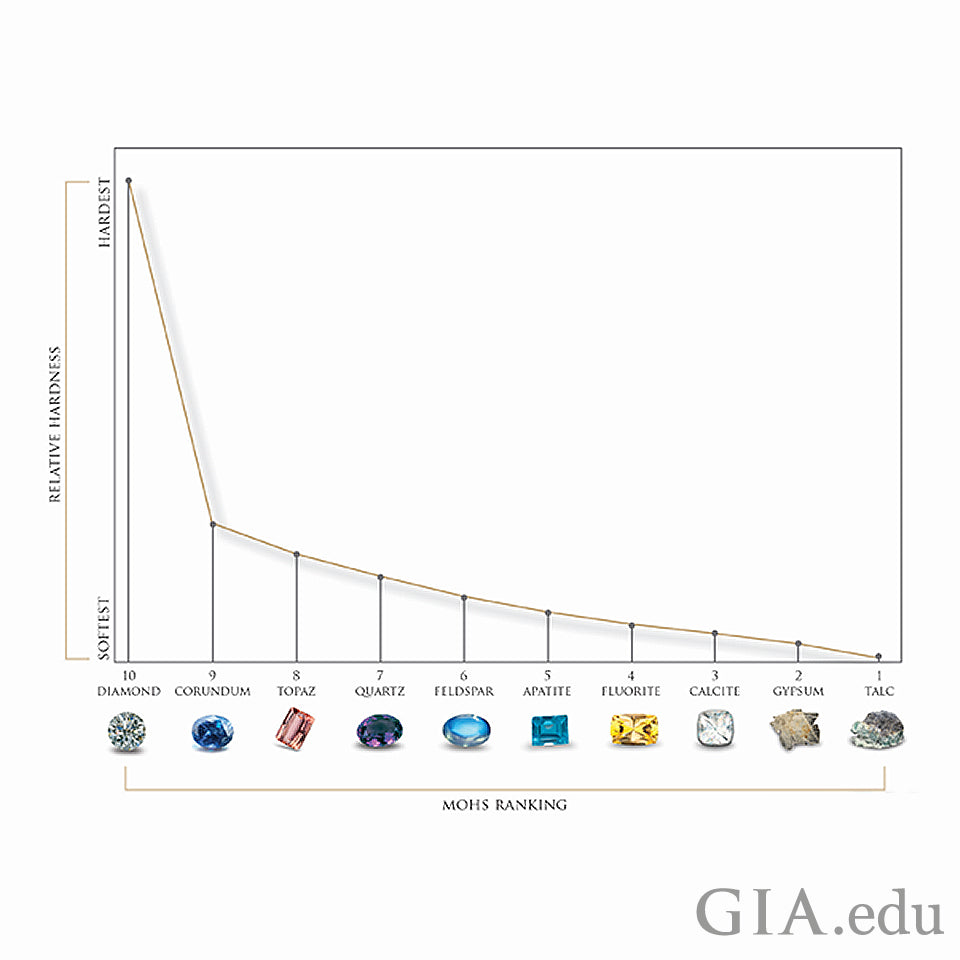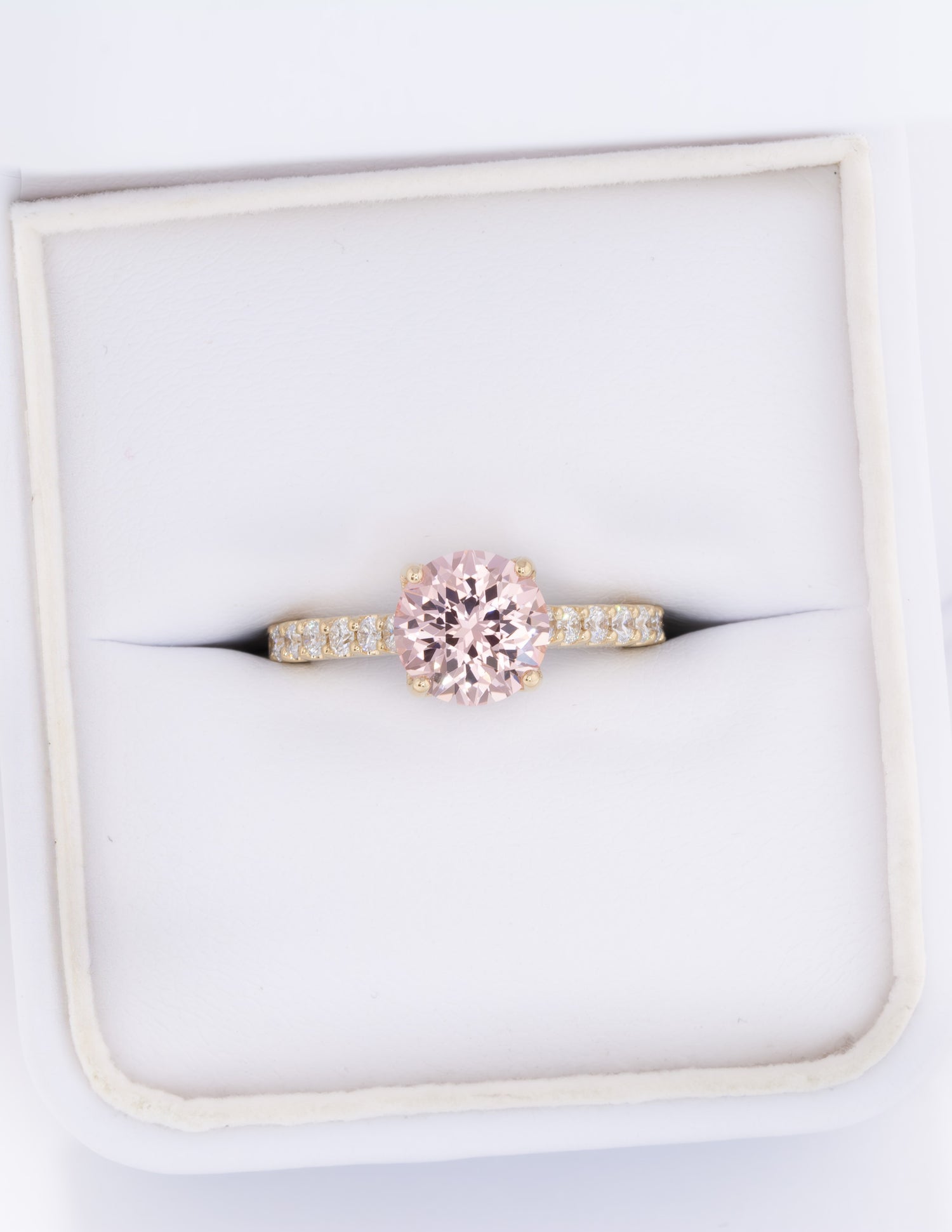You may have heard the term 'Mohs Hardness' when describing a gemstone. But what is it, and how can it affect your jewelry choices?
The Mohs Hardness scale is a logarithmic scale that measures the scratch resistance of different gems and materials. Developed in the early 1800s, it's still the most widely used!
While the Mohs Hardness scale measures scratch resistance, it shouldn't be confused with Toughness. The toughness of a gem means its resistance to breaking and chipping.
The Mohs Hardness scale ranks from 1 - 10, with 1 being the most prone to scratches. So it shouldn't come as a surprise that diamond tops the chart at 10!
Contenu réductible
Popular Gemstone's Hardness
- Diamond: 10
- Moissanite: 9.5
- (Corundum) Sapphire & Ruby: 9
- Alexandrite: 8.5
- YAG: 8.5
- Spinel: 8
- (Beryl) Aquamarine, Morganite, & Emerald: 7.5 - 8
- Tourmaline: 7 - 7.5
- (Quartz) Amethyst & Citrine: 7
- Zircon: 6.5 - 7.5
- Garnet: 6.5 - 7.5
- Peridot: 6.5 - 7
- Moss Agate: 6.5 - 7
- Steel Nail: 6.5
- Tanzanite: 6 - 7
- Labradorite: 6 - 6.5
- Moonstone: 6 - 6.5
- Opal: 5.5 - 6.5
- Glass: 5.5
- Turquoise: 5 - 6
- Apatite: 5
- Copper Penny: 3.5
- 14k Gold: 3 - 4
- Pearl: 2.5 - 4.5
- Fingernail: 2.5
- Amber: 2 - 2.5
- Talc: 1

How does this affect your jewelry choices?
You may have noticed we also included common items and their hardness: Steel Nail, Glass, Copper Penny, and Fingernail.
The Hardness of a gemstone means that it can quite easily scratch any material below it on the scale - and can be scratched by anything higher! This is important to keep in mind when choosing the right setting.
For example, though Pearls are lovely, they can easily be scratched by Glass. We would recommend keeping Pearls to necklaces and earrings where they have a very low chance of coming into contact with harder materials.
For rings, we would recommend anything 7 through 10 as they will be more scratch resistant.
For daily wear rings on the other hand, such as engagement rings, you may want to stick to gems with a Hardness of 8 or more! Excellent examples include Diamonds, Corundum (Sapphire & Ruby), as well as Alexandrite, Moissanite, and YAG.

Storing your jewelry
Now that we've covered hardness, what's the best way to prevent your gem from being scratched?
While we all have clumsy moments (we certainly do!), it's not just important to take care of your ring when you wear it, proper storage can help as well.
A slotted jewelry box is a great way to keep your gems from touching each other, preventing scratches. Remember as well that gold is quite soft. At 3 - 4, most gems will scratch it, so it's best to not jumble them all together to keep your jewelry looking fresh and new!
